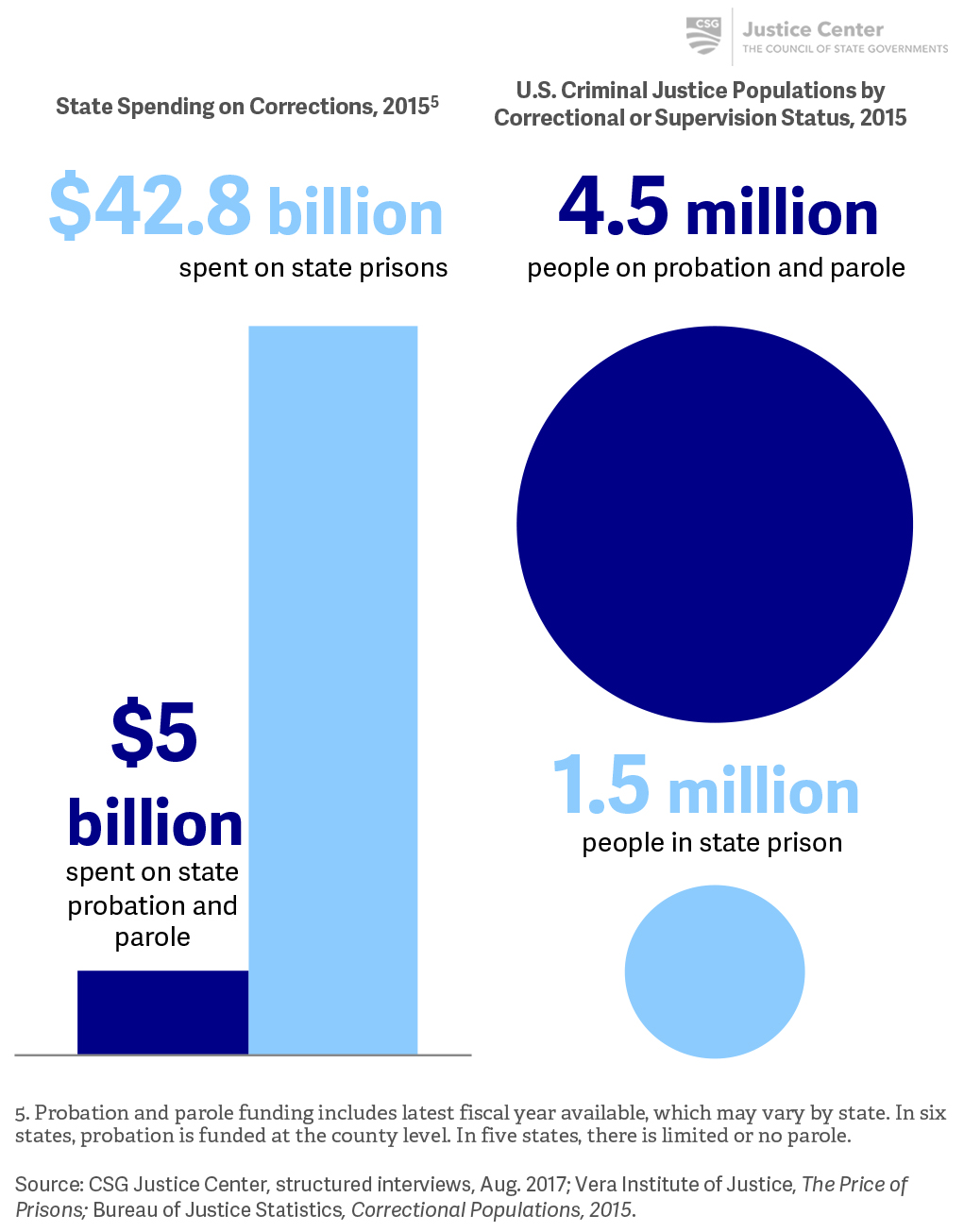Part 3, Strategy 1
Action Item 1: Identify how much states spend on prisons and supervision.
Why it matters
It is important for state leaders to understand what they are buying with their public safety dollars. While many policymakers are keenly aware of how spending on prisons has changed over the last 10 years, they often know less about how spending on probation and parole supervision has changed or what recidivism outcomes are for people leaving prison or starting probation.[4] Further, state leaders may not know what types of investments in probation and parole could help states contain corrections costs and increase public safety.
Regular receipt of budgetary breakdowns for spending on both prisons and supervision, such as for programming, staffing, and health care, can help policymakers better understand what they are spending their public safety dollars on, identify gaps in funding, and develop opportunities to reinvest cost-effectively to strengthen public safety.
What it looks like
- Track and publish spending on prison, probation, and parole populations.
- Track and publish recidivism data for all people leaving prison and starting probation.
Key questions to guide action
- How much does your state spend annually on prison? What are the recidivism rates for people leaving prison?
- How much does your state spend annually on probation and parole supervision? What are the recidivism rates for people starting probation or parole?
- How much does your state spend each year incarcerating people who fail on probation or parole?
Use the information that follows to inform your answers to these questions.
In 2015, states spent more than $40 billion on prisons, or nearly 10 times the amount spent on community supervision, yet state probation and parole populations are three times the size of state prison populations.
A significant percentage of people leaving prison each year begin parole supervision, but not all. People may also be released to probation supervision or leave without supervision.
